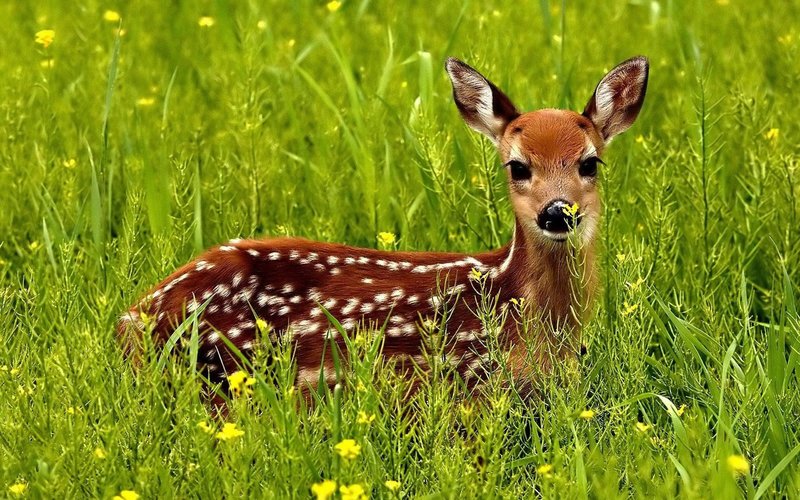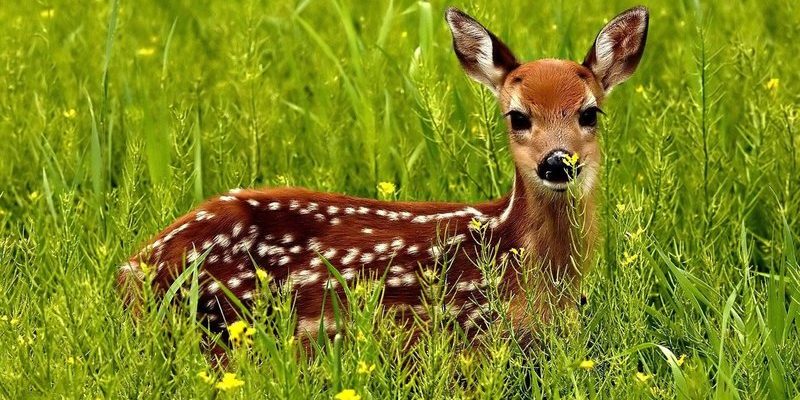
Red deers have a way of connecting with their young that feels almost magical. It’s as if they have an unspoken language that helps them communicate, protect, and teach. This article will dive into the world of red deer parenting, exploring how they raise their young, the challenges they face, and what makes their behavior so special. So, grab a comfortable seat, maybe even a cup of coffee, and let’s explore how these magnificent creatures manage the ups and downs of parenthood in the wild.
Understanding Red Deer Parenting
Red deer parenting begins with a strong bond between the mother, known as a doe, and her fawn. This bond is crucial for the survival of the young deer. After a gestation period of around 230 days, the doe gives birth to a single fawn, although twins are possible but less common. The moment the fawn is born, it instinctively knows to stay quiet and still, which helps it avoid predators.
Here’s the thing: the first few weeks of a fawn’s life are critical. The mother will usually hide her fawn in thick vegetation while she forages for food, returning frequently to check on her baby. This strategy is a clever way to protect the fawn, as it minimizes the chance of drawing attention from predators. In fact, a fawn’s spotted coat also plays a role in camouflage, helping it blend into its surroundings as it lies still.
Feeding Habits and Nutrition
Diet plays a significant role in how red deer raise their young. Does need to keep their energy levels high to support both themselves and their fawns. After giving birth, a mother will primarily feed on easily digestible plants, which helps her produce nutrient-rich milk. This milk is vital for the fawn’s early growth and development.
Typically, a fawn will nurse for about four to six months, gradually transitioning to solid food. During this time, it’s important for the fawn to learn what to eat, and this is where the mother’s guidance comes into play. She will often lead her fawn to various food sources, teaching it to graze on grasses, tender leaves, and fruits. The fawn watches and mimics its mother’s feeding behaviors, picking up essential survival skills along the way.
Protecting Their Young
In the wild, safety is a top priority for red deer mothers. Predators like wolves and large birds of prey threaten fawns during their early life. To combat this, does are incredibly vigilant, using their senses to detect danger. They not only rely on their keen eyesight but also their acute sense of smell and hearing. Here’s what’s interesting: if a doe senses a predator, she might make a series of vocalizations or even stomp her foot to alert her fawn to stay still and hidden.
Furthermore, red deer are social animals. During the calving season, female deer often group together to create a kind of safety network. This way, they can look out for one another and their fawns, forming a protective community that benefits all involved. You might imagine it like a neighborhood watch, but for deer!
Teaching Independence
As summer progresses and the fawns grow, mothers begin the gradual process of teaching them independence. This is crucial because, in the wild, fawns need to be able to fend for themselves as they reach maturity. Typically, by about six months old, fawns are starting to forage on their own, although they still rely on their mothers for guidance and support.
During this period, does will encourage their fawns to explore and venture further away. However, they don’t just cut the ties immediately; mothers will still keep a watchful eye. If a fawn strays too far or gets into trouble, the mother is quick to intervene. It’s all part of a delicate balance between promoting independence while ensuring safety.
Challenges Faced by Red Deer Mothers
While raising young can be rewarding, it’s not without its challenges. Environmental factors, food availability, and predation all affect how well a mother can rear her fawn. For instance, during harsh winters, food can be scarce, making it difficult for does to provide enough nutrition.
In areas where habitats are being destroyed due to human activity, red deer face even more obstacles. Loss of shelter and food sources can impact their ability to raise healthy young. Moreover, increased interactions with humans can lead to stress in deer populations, which can further complicate their survival strategies.
Community and Social Structure
Red deer are not lone wolves; they thrive in communities. The social structure plays a key role in how they raise their young. Mature females often band together, and this social network can provide additional assistance for does and their fawns. They share vigilance, providing extra eyes to spot predators.
Interestingly, older does also play a role in mentoring younger mothers. They pass down knowledge about safe foraging areas, proper hiding spots for fawns, and behaviors to adopt during threats. It’s almost like a school of parenting where wisdom is shared among generations. This communal approach helps ensure that more fawns survive, benefiting the entire population.
Seeing how red deer raise their young in the wild is a reminder of the beauty and complexity of nature. From the careful nurturing of newborns to the eventual push toward independence, these animals display a fascinating blend of instinct and learned behaviors.
Understanding how red deer approach parenting helps us appreciate the delicate balance of survival in the wild. Hopefully, this glimpse into their world inspires you to think about the wild beauty surrounding us and the incredible ways animals adapt to thrive. So, the next time you spot a deer, take a moment to appreciate the profound work of nature in raising the next generation.

